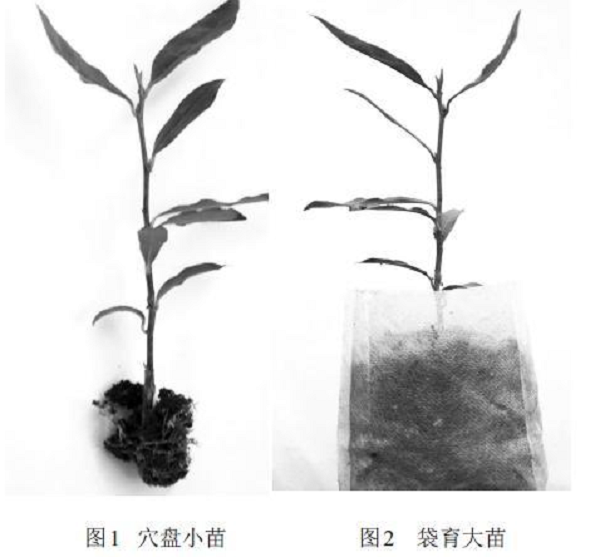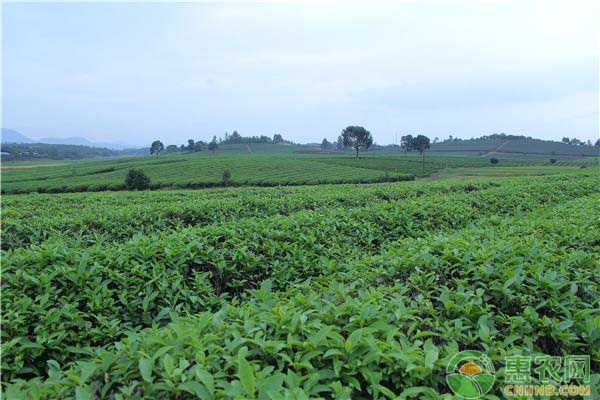How to build a cloned tea garden? Detailed explanation of the new clonal tea garden rapid garden technology
Newly established clonal tea gardens generally require longer management time. It takes 3-4 years from tea planting to gardening. With the continuous improvement of new clonal tea garden construction technology, the new clonal tea garden has gradually become a garden. reality.

First, change the transplanting "pot seedlings" as "bag breeding seedlings"
In the past, the construction of clonal tea gardens mainly used “ground seedlings†with roots and less soil. After transplanting, the greening rate was slow and the survival rate was low. In recent years, it has been changed to "pot seedlings" (Fig. 1). Spring seedlings are planted in the spring. In the autumn, the tea seedlings can be transplanted with the whole root of the substrate, and the survival rate is obviously improved. However, due to the short seedling age, small tea seedlings, and weak ability to resist disasters, there are still different degrees of dead seedling after planting. At the same time, after the tea seedlings are planted, the topdressing management is difficult, the growth rate is slow, and the stereotypes are not convenient. As a result, many farmers have not stereotyped and pruned in time, which affects the shaping of the tea tree shape and the formation of the surface. If you change to a "bag breeding seedling" (Figure 2) that is bred with a special seedling bag, these problems can be solved.

There are several methods for cultivating bag seedlings. At present, the most prudent and feasible method is: tea farmers prepare their own nutritious soil, plant the seedlings in the seedling bag, and then concentrate on the seedling bed for 1 year to grow into a large seedling. Then transplanted to a new tea garden. The benefits of this method are many. First, farmers can cultivate their own, which can reduce costs. Second, it is cultivated for one year in the local area, which is conducive to adapting the tea seedlings to the local climate and enhancing the resistance to stress. At the same time, it can also solve the problem of difficult transportation of large seedlings; It is concentrated in the seedbed, which is conducive to strengthening the management of topdressing, weeding, pest control, etc. It can prevent various disasters through covering and shading, creating a growth environment far superior to that of Datian for tea seedling growth, and promoting tea seedlings quickly. Growth; Fourth, it is quick and convenient to set and pruning in the seedbed, which is conducive to shaping a reasonable tree type; Fifth, the roots of the bagged seedlings are developed, with more soil and adaptability, and the roots of the transplanted bag are not damaged, so it can be greatly improved. The survival rate of tea seedlings was transplanted, and the whole seedlings were transplanted. At the same time, the growth rate of tea seedlings after transplanting was also significantly accelerated.
Second, the previous period does not apply fertilizer for deep application of base fertilizer, a small number of multiple top dressing
In the past, the construction of clonal tea gardens was limited by funds. Secondly, it was afraid of fertilization and young roots of tea seedlings. Therefore, the method of “white seed under the ground†was adopted. In the early stage, no fertilizer was applied and no topdressing was applied, resulting in lack of nutrients. Slow growth.
It is necessary to speed up the growth of tea seedlings, realize early planting and early mining, and must apply fertilizer in the early stage. One must apply deep fertilizer. If the tea garden is pumped, it can be combined with backfilling and layering deep base fertilizer; if there is no time to draw the trough, the base fertilizer can be ditched in the middle of the tea line, and then the fertilizer is planted in the ridge, and the tea seedlings are transplanted on both sides of the ridge. Generally, the long-acting organic fertilizer is more than 3000 kg per 666.7 m2, and the special fertilizer for tea is more than 75 kg. The soil and fertilizer are evenly mixed. As long as the distance between the fertilizer and the root of the tea seedling is appropriate, it will not only damage the tea seedlings, but also promote the rapid growth of the tea seedlings in the early stage, and lay a good foundation for the high yield of the tea plantation. Second, we must topdress in time. In the past, when the seedlings were used, the roots of the tea seedlings were weak when they were transplanted, and they could not be topdressed. However, after transplanting, you should adopt the method of “small number of times, eat less and eat more meals†to carry out top dressing, and gradually increase the concentration and dosage of fertilizer according to the growth of tea seedlings. After switching to a large seedling, it is necessary to pay attention to timely topdressing. In the early stage, foliar spray fertilizer can be used, or combined with watering and drought resistance to apply thin manure water, biogas slurry, urea aqueous solution, etc. In the later stage, urea can be applied in shallow trenches on both sides of the tea line. As long as the dosage is appropriate and the distance is appropriate, the tea seedling will not be damaged.
Third, the modified cultivation is covered by plastic film mulching
In the past, transplanted tea seedlings were generally cultivated in open fields and did not cover the mulch. The advantage of this method is that it is simple and labor-saving, but there are many problems: First, most of the clonal tea gardens are built in the second high mountain area with an effective low accumulated temperature (800~1 200 m above sea level), which is slow in early spring and early in autumn. The mulch film, tea seedlings have limited growth time each year, affecting the speed of gardening; second, the open field cultivation is not only afraid of drought, but also afraid of rainfall, but also afraid of freezing damage. In case of continuous high temperature and drought, the tea seedlings will be seriously affected by drought, and in the case of continuous rainy weather, the soil will be soiled. Humidity is too large, in case of heavy rain, the soil will be compacted. When the temperature is low, the tea seedlings will be frozen. These are not good for the survival and growth of the tea seedlings. Third, the tea seedlings that are not covered with film, the weeds are easy to grow near the roots, if not Weeding will affect the growth of tea seedlings. If weeding, it will easily affect or even damage tea seedlings, affecting the survival of tea seedlings.
When the tea seedlings are transplanted, the mulch film is covered, which can better solve the above problems. First, the cover film can increase temperature and heat preservation. Early spring and late autumn can effectively increase soil temperature, promote root development of tea seedlings, prolong the growth time of tea seedlings, and increase the annual growth of tea seedlings. Second, the cover film can increase drought tolerance and cold tolerance of tea seedlings. Resilience, anti-reverse ability, the film can play a role in the preservation of drought, reduce the evaporation and loss of soil moisture; at low temperature, the film can play a role of warming and heat preservation to reduce the damage of tea seedlings; when it is rainy or rainstorm, the film can play a role in shielding and keep The soil in the membrane is suitable for moisture, loose and breathable. In short, the cover film can keep the soil temperature and humidity as suitable as possible, and promote the rapid growth of tea seedlings. Third, the cover film can inhibit the weed growth near the root of the tea seedling and create good conditions for the growth of tea seedlings. .

Tea seedlings cover the mulch and can be used in a variety of ways. In the past, transplanting seedlings and seedlings can be planted either first or later. If the transplanting bag is used to grow large seedlings, since the amount of stems and leaves on the ground is large, it can only be planted first. It is best to ridge the membrane when the soil is suitable, and then use a mechanical punch to punch the seedlings on the membrane surface. This is not only fast, high efficiency, but also ensures the quality of transplanting and improves the survival rate of tea seedlings.
Medton Medical , https://www.medton.cn
